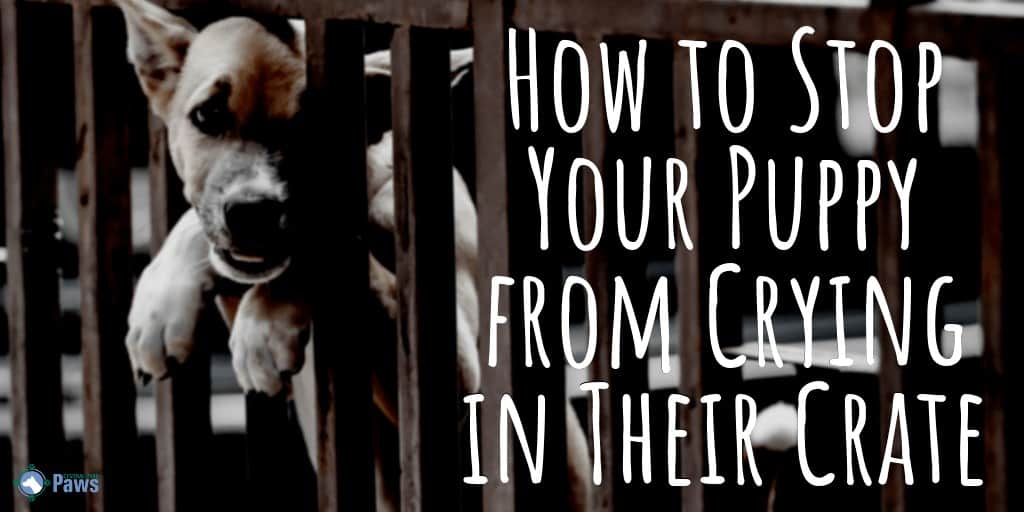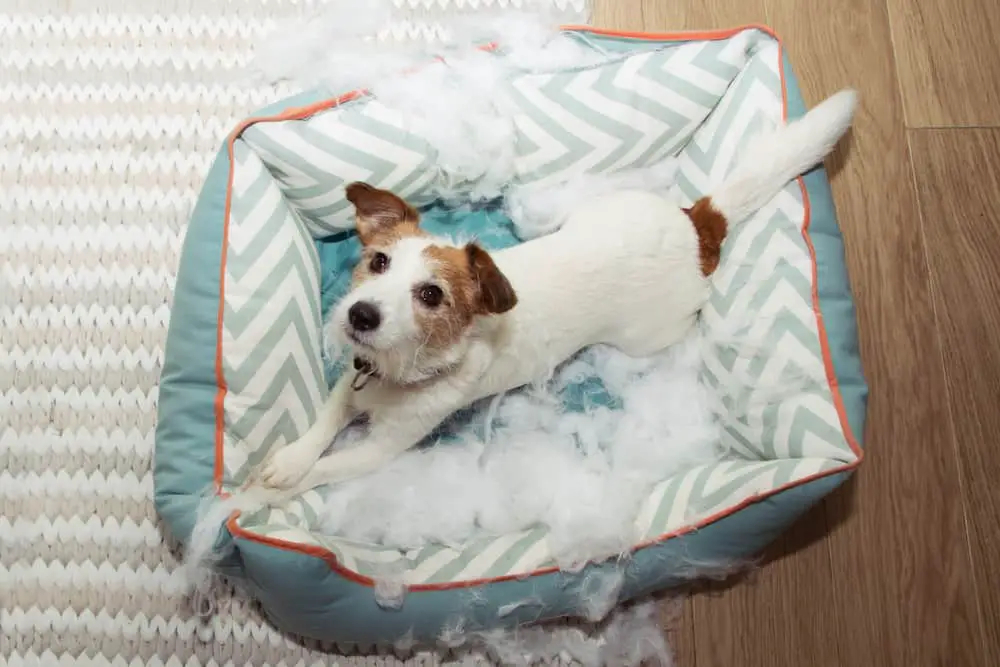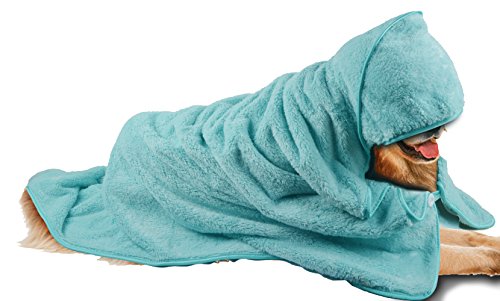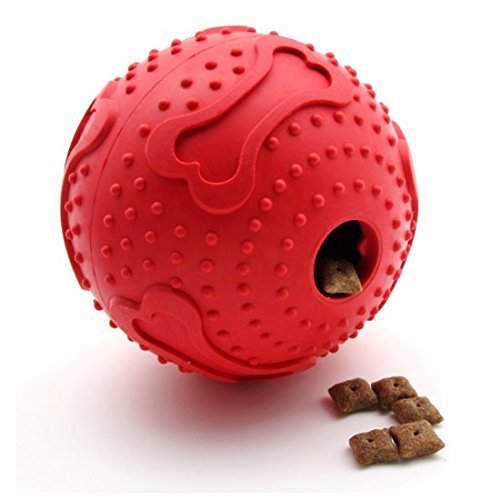For those of us lucky enough to have shared our lives with puppies, we all know that it isn’t always sweet puppy breath and soft puppy toes.
Bringing a puppy home isn’t that different from having a new baby in your home, there’s sleepless nights, crying, and a lot of cleaning up after they go to the bathroom.
Daisy was the only one I adopted when they were a puppy. Sometimes puppyhood doesn’t last long enough, and other times I couldn’t wait for her to grow up.
In the beginning, one of my challenges with her was her crying in her crate at night.
At the time I lived in a townhouse and my bedroom wall connected to my neighbor’s garage wall.
I remember the first night Daisy cried and cried and would only stop when I took her out. The next morning when I saw my neighbors they asked if I had a baby stay overnight! Oops!
By the third night, Daisy and I had gotten everything figured out, and she never cried in her crate again.
Reasons Why a Puppy Cries in Their Crate
There is only one reason why a puppy cries in their crate, and that’s to get your attention. Why the puppy wants your attention is the real question.
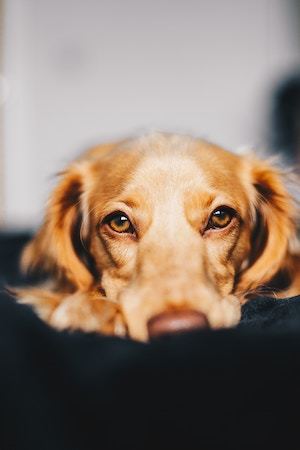
#1. They are Lonely and Scared
They are Lonely and Scared – When you bring home your furry bundle of joy, it is likely it’s your puppy’s first time leaving their mom and littermates, and that can be downright scary.
Also, many families put their puppy’s crate away from the family, such as in the laundry room, garage, or basement. Being that far from their new family will cause the puppy to feel isolated and lonely.
Dogs are pack animals and pack animals stick together. It can be very hard on dogs, especially puppies to be left alone in a kennel.
#2. They are Bored
They are bored – Puppies get bored and would much rather be out and about playing and having fun.
However, sometimes puppies need to be crated because their humans are leaving or because the puppy needs to take a nap.
#3. They Have to go to the Bathroom
Puppies do not have the same control over their bladder as adult dogs. A good loose rule to follow is that a puppy can hold its bladder the same number of hours as it is months old. For example, if your puppy is 3 months old, they can hold their bladder for 3 hours.
Keep in mind this is a rule of thumb not an exact amount of time, some puppies can go longer, and others can’t wait even 3 hours.
#4. They Haven’t Been Properly Trained
It is likely that the first time your puppy goes into a crate is when you put them in it. A kennel can either be a good or bad place.
If we put our puppy in the kennel and leave them, it will feel more like a jail than a cozy place to sleep and relax.
If you’re haven’t crate trained your puppy yet, check out this course. It’ll make your life MUCH easier!
#5. The Puppy is Not Getting Enough Exercise

Puppies need short periods of exercise frequently throughout the day.
Without the proper amount of activity, you will just be putting a little ball of energy into a kennel.
A little whining ball of energy, who will use that energy to, you guessed it, whine.
#6. They Spend Too Much Time in the Kennel
If a puppy spends all day in their kennel while you are at work, then let out for an hour for dinner before you head out for the night, that is just too much time in a kennel.
Even if you don’t go out for the night if your puppy is only out of their crate for a couple of hours in the evening that’s still too much kennel time.
Finding the right solution to stop your puppy crying in their crate depends on the reason why they’re crying.
How to Stop Your Pup From Crying in His Crate
#1. They are Lonely and Scared
Crate Location
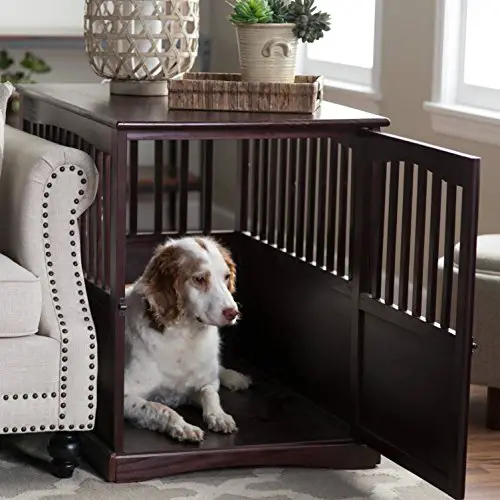
If your bedroom is large enough, it’s best to place your puppy’s crate in your bedroom. By placing your puppy’s crate nearby when sleeping, it will help give your puppy comfort, and they won’t feel so lonely.
Also, if you can have more than one kennel, it’s good to put the 2nd one in a busier area of your home. This way when your cooking, doing housework, or your puppy needs a nap, they will still be able to hear and smell that the family is close.
If you have a soft sided crate, it’s not hard to move it around the house as you need it without having to fumble with awkward, confusing, and overly complicated kennels (Ok, maybe it was just that one bad time but I’m still holding a grudge).
Scented Towels
If you are in contact with the family, you’re getting the puppy from you can request to drop off a towel or two a week in advance.
These towels can be kept in and around the mother dog and puppies off and on, so their scent can absorb into the towels. The scented towel will help give your new puppy comfort on their first few nights.
In the evening you can place the towel that smells like its mother in the kennel with them.
If you have a small nonelectric heating pad, say one that can go in the microwave, gently heat it until it is warm, but not hot, then wrap the towel around it, this will enhance the smell and give your puppy something warm to curl up next to just like when they were back with their litter.
If you drop off more than the one, you can keep the others in a sealed plastic bag keep the scent stronger until it’s needed.
The recommendation for multiple towels is not because the puppy needs the towels for an extended period, but instead, in case, the towel gets soiled you have a backup.
Alternatively, when you drop off the clean towels, you could also drop something off of yours for the puppy to get used to your smell.
White Noise
Sometimes playing a radio or leaving on a TV when you are gone can help your puppy not feel so alone. Though your puppy will not mistake the white noise for you, it will break up the silence of the house.
#2. They are Bored
Being confined in a kennel can be boring for a puppy.
During these times, your puppy may settle down easier if given safe toy such as:
- Kong Puppy with peanut butter smeared inside
- Idepet Dog Toy Ball that you can secure treats to the outside
- ThinkPet Rubber IQ Treat Ball, you place treats inside, and your puppy has to work to get them out
- West Paw Zogoflex Qwizl, an interactive treat dispensing toy that works with larger treats like dental chews
Whatever toy you choose to use, be sure to remember the following things.
- Choose a puppy toy that is right for the age and size of your puppy
- When your puppy finishes, they may be thirsty, so be sure to offer them fresh, clean water when they’re done playing with their treat toy.
- Your puppy may need to go outside after they get done eating the treats
- You will want to be able to monitor your puppy with their chew toys to make sure there isn’t any choking hazard, especially if your puppy can chew pieces off of the toy.
Daisy was small, but she was a voracious chewer, so I had to skip over puppy Kongs and go straight to the ones made for aggressive chewers.
#3. They Have to go to the Bathroom
Puppies need to be able to relieve themselves frequently. Before putting your puppy into their kennel always bring them outside to do their business.
Remember puppies have the attention span of a gnat, so they will frequently forget why they’re outside or will not completely relieve themselves.
We’ve all had the puppy experience of bringing our puppy back inside and not even five feet from the door they squat down to finish what they started outside.
So, if you have a whining puppy, it is best not to try and call their bluff, bring them outside again and see if they need to relieve themselves.
#4. Proper Training
Puppies need to feel that the kennel is a safe, comfortable place. For puppies to come to that conclusion, we need to set up short positive training sessions.
Here are some ways we can keep the kennel a positive experience.
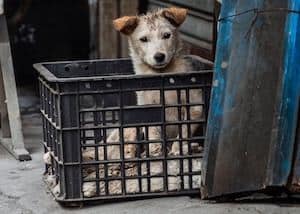
- Feed some of their meals in there. If you plan for your dog to always eat in their kennel, then you can feed all of their meals there.
- Randomly pop yummy treats in their crate for them to find (your puppy will start to check their crate regularly for treats)
- Place fun toys in their crate
- Place a bed or towel in the crate to make it more comfortable
- Toss treats into the crate then close the door for a few seconds, then open it praise and reward them. Gradually build on the time your puppy is in the kennel with the door closed and at the same time increase your distance from the kennel.
#5. The Puppy is Not Getting Enough Exercise
Putting a furry ball of energy in a kennel and leaving is a recipe for disaster. Not only will you have a crying puppy but you may end up with a destructive puppy.
Puppies need exercise. Short, frequent exercise sessions work best.
However, you never want to exercise your puppy then put them directly into the kennel, they need a little time to come down from their exercise high first.
#6. The Puppy is in the Kennel too Much
For puppies to properly develop physically, mentally, and emotionally they need to be out of their kennels playing, exercising, throughout the day. Most of us work outside of the home, so that makes it pretty tough.
Here are some ideas on how to break up your puppy’s day:
- Find a trusted dog walker to come over once or twice a day to let your puppy out
- See if a friend or family member to come over mid-day to let your puppy out or if possible, run home at lunch
- Get up earlier to go for a nice walk before your day starts and plan for an evening walk when you get home. I was walking Daisy four times a day before she started daycare.
It can be difficult listening to your puppy cry and whine in their kennel, and often we are tempted to go get them out, but try and be patient and let them cry it out for a few minutes.
Most puppies can self soothe after a minute or two, but if not, it would be good to check on them.
If you have tried everything and your puppy is a chronically crying without stopping, you may consider checking with your vet to be sure there is nothing medically wrong.
Three Things You Should Never do When Crate Training a Puppy
- Never yell at them or hit the crate to be quiet, it will only make your dog fearful of the crate and you
- Never force your puppy into their crate
- Never use the crate for punishment
FAQs
Is it OK to let puppy cry in his crate?
If you have taken care of their puppy needs, it is okay to let them cry for a little while.
How long should you let a puppy cry in a crate?
It would be best if you allowed your puppy to cry for a few minutes before checking in on them. It might be that your puppy has to go outside again.
Puppies have a terrible habit of not completely eliminating when outside because they get distracted.
Can a puppy cry itself to death?
Sadly yes. It is extremely rare, but there’s a reported case of a dog that did just that while being boarded.
Is my puppy crying because the crate is too small?
Possibly, the puppy should be able to stand fully and be able to walk in a circle comfortably. Puppies grow fast so you may need to get a bigger kennel as your puppy grows.

